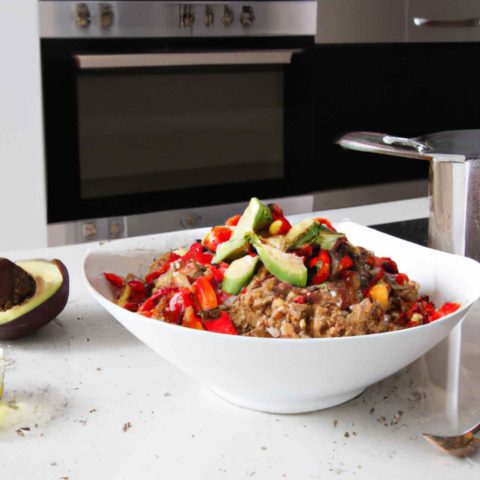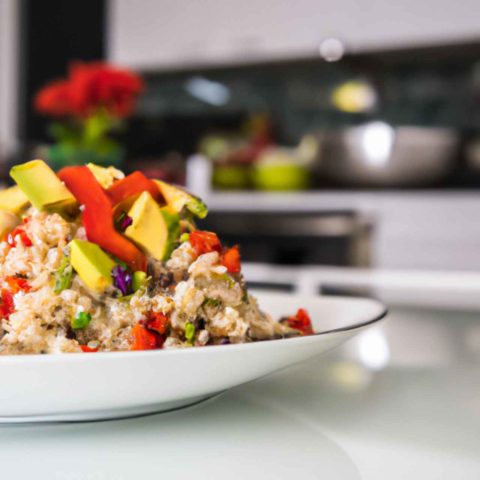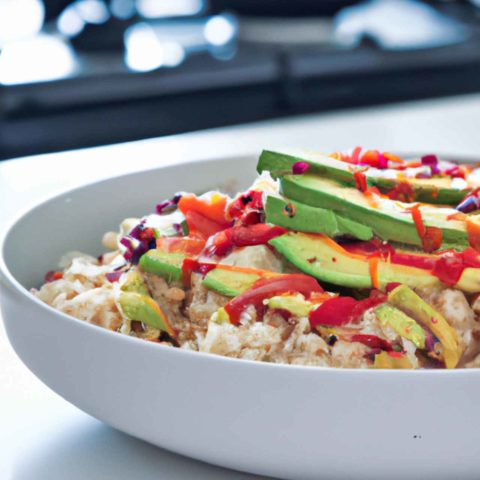While salt is an important ingredient in many dishes, there are some people who prefer to avoid it for health reasons. Others simply do not like the taste of salt. If you fall into either category, you may wonder how to season grain rice without salt.
The good news is that rice can be seasoned with various ingredients. This blog post will teach you 11 ways to flavor your rice without using salt which is helpful if you are going to cool any leftover rice before making a fried rice dish.
11 Ways to Add Flavor and Season Rice without Salt in 2024
1. Vegetable Broth
Vegetable broth is a great option if you’re looking for a way to add flavor to your rice without using salt. Should you season rice before or after cooking?
This broth is made from vegetables and herbs and packed with flavor. Additionally, it can be a healthy way to add more nutrients to your diet.
Here’s how to make a simple vegetable broth:
- Start by sautéing onions, garlic, and any other vegetables you like in a bit of olive oil.
- Add water and bring it to a boil.
- Add your favorite herbs and spices.
- Let the broth simmer for 30 minutes to an hour. (This method can be used to fix hard rice)
- Strain the broth and use it for cooking your rice.
You can also employ chicken broth also for a savory flavor.

2. Chopped Onion, Garlic, or Other Aromatic Vegetables
The benefits of this are twofold. First, it can add a great deal of flavor to your rice without resorting to salt. Second, it can also add some extra nutrition to your meal.
If you’re looking to add chopped onion, garlic, or other aromatic or roasted vegetables to your rice, the best way to do it is to cook the rice in water flavored with these ingredients. This will infuse the rice with its flavor and make for a more delicious and nutritious meal with a dash of white pepper. These can be used to add additional flavor to stovetop reheated rice.
3. Tomato Paste, Salsa, or Another Flavorful Sauce
Adding tomato paste, salsa, or another flavorful sauce to rice can help add flavor without salt. This can be a great way to make a healthier version of your favorite rice dish or simply add more flavor to your plain rice. Adding these sauces can also help increase the antioxidant content of your meal.
4. Cooked Beans, Vegetables, or Meat
This will give it a boost of flavor without adding any extra salt. Plus, it’s a great way to get some extra nutrients into your diet.
You can also use these vegetables to make rice less sticky.
If you’re not sure how to cook beans, vegetables, or meat, don’t worry. There are plenty of recipes out there that can help you. And once you get the hang of it, you’ll be able to create your own flavor combinations.

5. Shredded Cheese, Diced Avocado, or Chopped Nuts and Seeds
Not only will it make your rice more flavorful, but it will also add some extra nutrients and healthy fats.
Here’s how to do it:
- Start by cooking your rice according to the package directions.
- Once it’s cooked, stir in any of the shredded cheese, diced avocado, or chopped nuts and seeds.
You can also drizzle nonexpired avocado oil over also, like you see the chefs do on tv.
6. Honey, Maple Syrup, or Another Sweetener
There are many benefits to adding honey, maple syrup, or another sweetener to rice. One benefit is that it can help to make the rice moister. Another benefit is that it can add a bit of sweetness to the rice. Additionally, adding honey, maple syrup, or another sweetener can help to add flavor without making the rice too salty.
To add honey, maple syrup, or another sweetener to rice, start cooking the rice according to the package directions. Once the rice is cooked, add the honey, maple syrup, or other sweeteners to taste. Stir well and serve.
7. Soy Sauce, Fish Sauce, or Oyster Sauce
Soy sauce is a popular choice for adding flavor to the rice. It’s made from fermented soybeans and wheat and has a salty, umami flavor. Fish sauce is another option, and it’s made from fermented fish. It has a strong, pungent flavor that some people love, and others find to be too intense. Oyster sauce is a third option, and it’s made from oysters. It has a savory, slightly sweet flavor that can enhance the flavor of rice.
To add a small amount to the cooking rice water, use soy sauce, wine vinegar, fish sauce, or oyster sauce to add flavor to your rice.
Start with a bit and taste as you go, adding more until the desired flavor is achieved. Remember that these sauces are very salty, so you may not need to use them as much as you think.
Once the rice is cooked, simply stir in the sauce and serve; you will not have bland food anymore.

8. Dried Herbs or Spices
Many different herbs and spices can be used to flavor rice. Some popular options include garlic, onion, cumin, and turmeric and cayenne peppers. You can experiment with combinations to find the perfect flavor for your dish.
To add flavor to your rice with dried herbs and spices, simply add them to the pot when cooking the rice. This will allow the flavors to infuse into the rice as it cooks. You can add them after the rice is cooked for a more intense flavor. To get a bit of color into the rice, add some curry powder.
Having some extra taste in you cooked rice is good if you are. going to use leftover rice to make fried rice, just cool the white rice first.
9. Fresh Lemon Juice or Lime Juice
The acidity in the lemon or lime juice helps to bring out the natural flavors in the rice, making it more flavorful and thus reducing the need for additional salt.
To add fresh lemon or lime juice to your rice, simply squeeze the juice from one or two lemons or limes into the cooking pot before adding the rice and water. Then cook the rice according to your usual method.
The amount of lemon or lime juice you use will depend on your personal taste, but start with a couple of tablespoons and then adjust as needed. You may need to use less salt overall when cooking rice this way, so be sure to taste it before adding any additional salt. If you have brown rice, then you can also use balsamic vinegar.
10. Roasted Tomatoes, Sautéed Mushrooms, or Other Flavorful Toppings
Roasted tomatoes, for example, are a good source of lycopene, an antioxidant linked to a reduced risk of heart disease and cancer. Sautéed mushrooms are a good source of vitamin D, which is important for bone health. And both roasted tomatoes and sautéed mushrooms are low in calories and fat.
To make roasted tomatoes, simply slice them in half and place them on a baking sheet. Drizzle with olive oil and bake at a high temperature until they start to caramelize. For sautéed mushrooms, simply slice them and sauté in a pan with a little olive oil. Season with pepper and any other herbs or spices you like.
11. Flavorful Soup or Stew
This can be a great way to flavor your rice without making it too salty. Plus, it can also help to keep your rice from drying out. Just be sure to cook the rice long enough so it’s fully cooked and is not dry rice. If you’re using a stew or already salty soup, you may want to cook the rice for a shorter amount of time so that it doesn’t become too salty – just add back a squeeze of lemon juice and a garlic clove.
So there you have it, 11 seasonings that will make your rice taste great without the need for salt. You can use these on all types of rice, like basmati rice also.
Experiment with different combinations of these seasonings to find the perfect flavor for your bowl of rice. As you can see, there are plenty of ways to season rice. So if you’re looking for a way to cut down on your salt intake or simply don’t like the taste of salt, give one of these options a try. Your tastebuds will thank you!